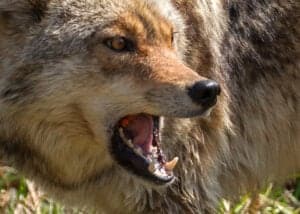Fluffy and irresistibly cute, baby coyotes are captivating little creatures. Born during the springtime, these endearing and small, fuzzy bundles of energy overflow with curiosity, exhilaration, and playfulness as they take on the world around them. Let’s take a closer look at some adorable pictures and incredible facts about baby coyotes!
1. Baby Coyotes Are Called Pups

Just like domestic puppies, coyote pups love to explore and play!
©Lynn_Bystrom/iStock via Getty Images
Coyotes — and especially baby coyotes — look a lot like big dogs. It’s no wonder then, that baby coyotes are called pups! Although both dogs and coyotes are members of the genus Canis and have many similarities, coyotes are wild animals while dogs are domestic. That means that even though they look adorable, baby coyotes are still wild animals. If you happen to come across a baby coyote, you should resist any urge to intervene, touch, or pet it. Most likely, the baby’s mother is nearby and will be returning soon. If you are worried that the pup is abandoned or it appears sick or injured, call your local wildlife rehabilitator or wildlife officer.
2. Baby Coyotes Are Born Blind and Deaf
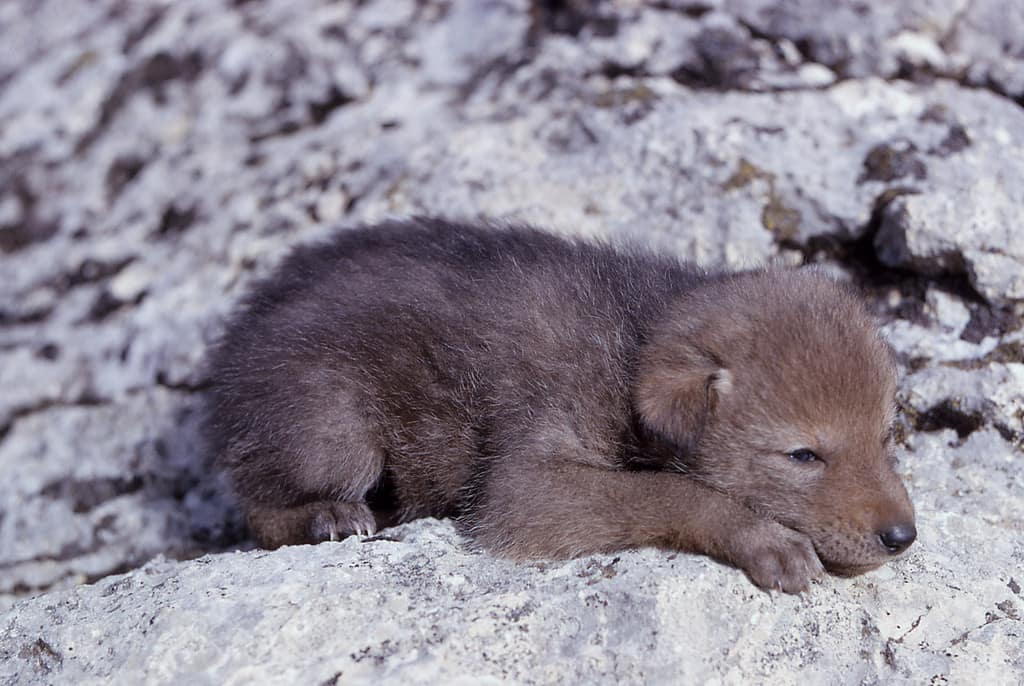
When coyote pups are born, their eyes are shut and their ears flop over.
©John Good, National Park Service / Public Domain – Original / License
Newborn coyote pups are both blind and deaf when they are born. These precious creatures are completely reliant on their parents for protection and the nourishing milk of their mothers for their first two weeks of life. After around 12 days, they begin to open their eyes and explore the world around them little by little. When they are around 20 days old, baby coyotes can usually walk. Until they are eight to 12 months old, most baby coyotes remain close to their parents and families.
3. Baby Coyotes Live in Families
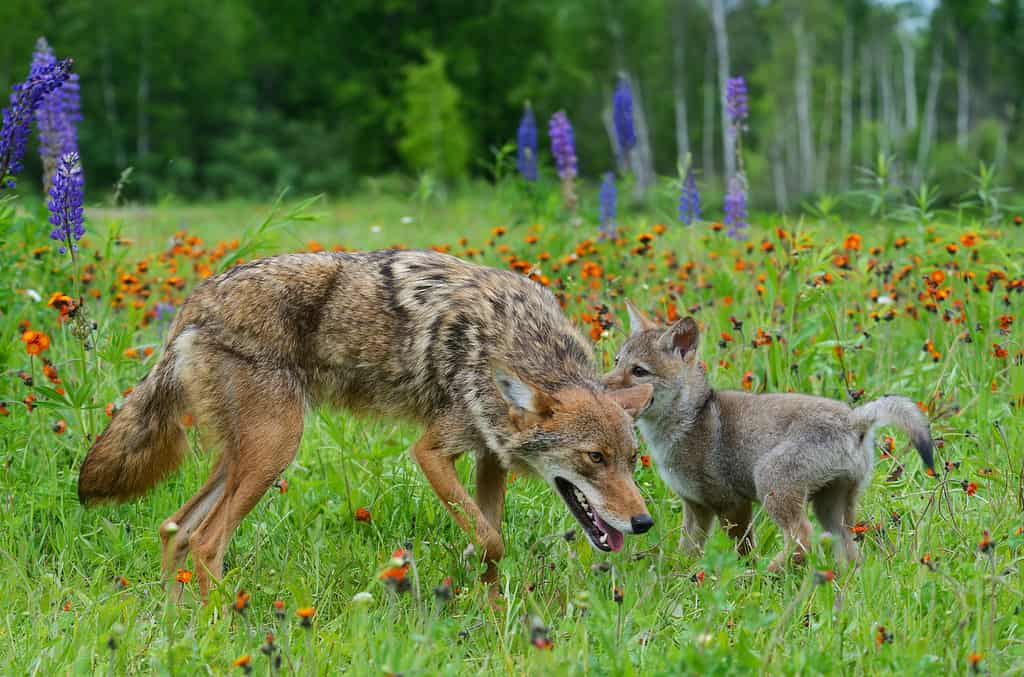
In some packs, the aunts and older siblings spend the most time playing and teaching baby coyotes.
©Betty4240/iStock via Getty Images
Coyotes are extremely social and gregarious animals. They typically live together in family units or loosely knit packs. Similar to wolves, coyotes possess significant social structures that revolve around family and shared territories. A coyote pack includes an alpha pair along with three to eight other family members, although the pack size often depends on their territory and how much food is available. Typically only the alpha pair breed, and the rest of the pack members help to care for and raise the young coyote pups. With not only their parents but aunts, uncles, and older siblings, baby coyotes are always well cared for and receive plenty of love.
4. Coyotes Are Tiny When They Are Born
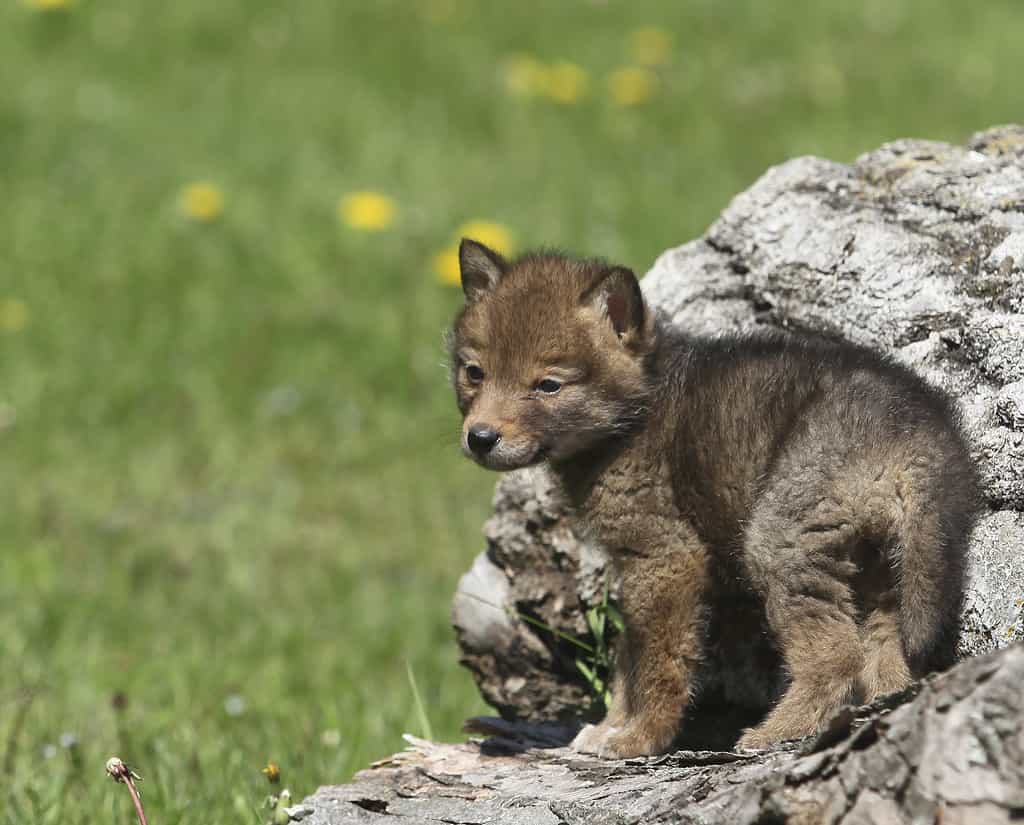
Coyote pups are completely dependent on their parents for the first few weeks of life.
©Lynn_Bystrom/iStock via Getty Images
Fully grown coyotes weigh about 15 to 44 pounds depending on the subspecies. Although they are formidable predators as adults, when baby coyotes are born they are extremely small, weighing only 4.4 to 1.10 pounds! Female coyotes are pregnant for about 63 days and give birth to baby coyote pups in the spring. Baby coyotes are usually born sometime in March or April, with four to seven pups in a litter on average. Newborn coyote pups are tiny and helpless, relying completely on their mothers for everything they need. They usually sleep most of the time, waking up every few hours to nurse. When they are around four weeks old, baby coyotes begin to eat solid and regurgitated food from their mother and father.
5. Baby Coyotes Have Excellent Parents
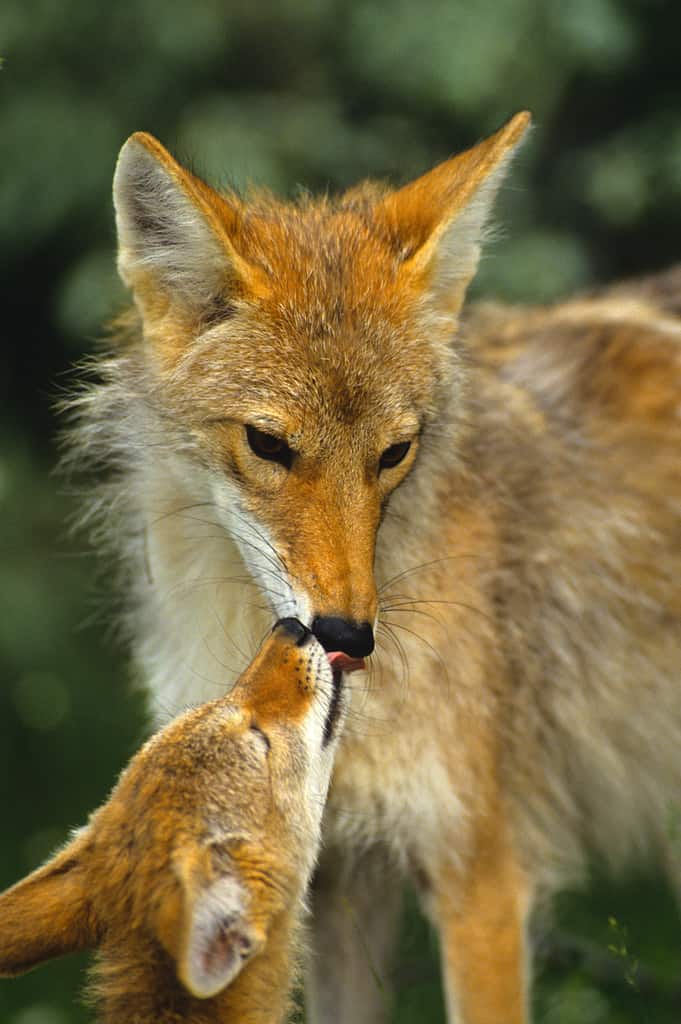
Coyote parents are extremely devoted to the care and welfare of their babies.
©Tom Tietz/iStock via Getty Images
Male and female coyotes are strictly monogamous, both working as equal partners to care for their young. When a female coyote is pregnant, she will build or find a den and line it with soft materials. Male coyotes go out and hunt, bringing back food for the female.
Once the babies are born, coyote mothers are extremely attentive, providing excellent care for their young pups. For the first several weeks of their lives, baby coyotes are completely dependent on their mothers, who in turn continually stay by their pups to keep them safe, warm, and well-fed. Coyote fathers also help by hunting and bringing back food for the mother and her pups.
6. Baby Coyotes Fight Before They Play
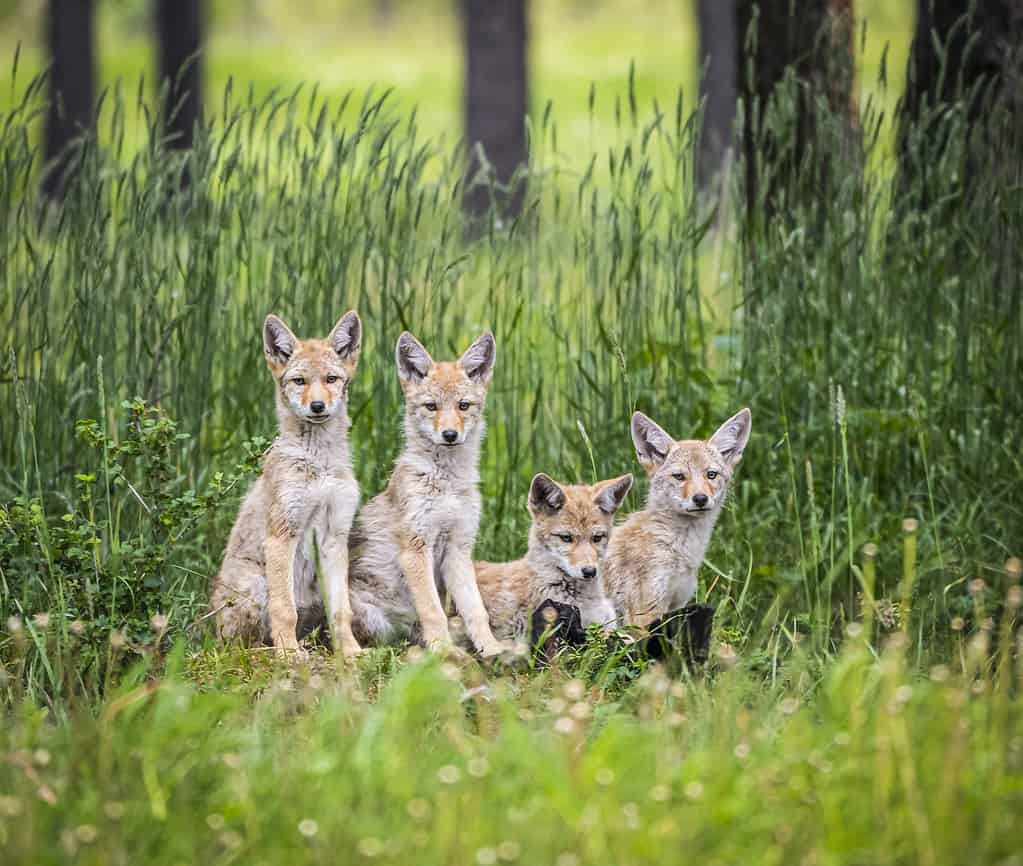
Coyote pups often engage in lively wrestling matches, playful chases, and other entertaining games.
©Annie Hewitt/iStock via Getty Images
Although they may resemble wolf pups, coyote pups have their own distinctive approach to fighting. In fact, before they begin engaging in play or any playful behaviors, baby coyotes actually start first with serious fights. Interestingly, even at just three weeks old, these feisty pups display less inhibition when it comes to biting each other, a stark contrast to the behavior of wolf pups. Then, by the time they are four to five weeks old, baby coyotes establish dominance hierarchies, making them more inclined to engage in play rather than aggressive fights.
7. There are Baby Coyote Hybrids
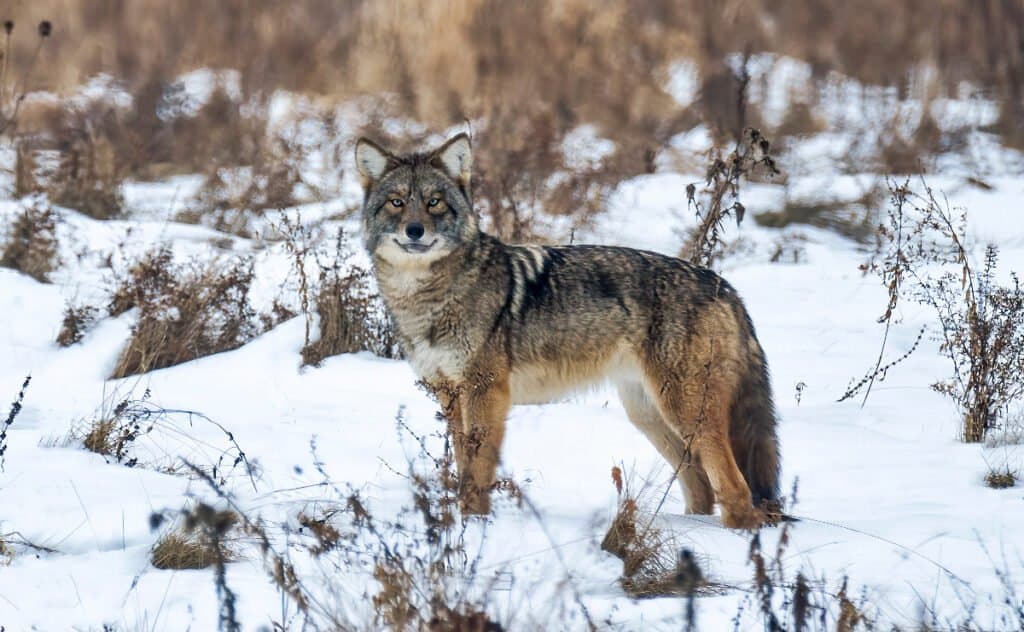
Eastern coyotes (
Canis latransvar.) are a unique wild hybrid with DNA from wolves, coyotes, and dogs.
©Fiona M. Donnelly/Shutterstock.com
Although it is extremely uncommon, coyotes occasionally breed with domestic dogs and even wild wolves. Known as “coydogs” and “dogotes”, the offspring of coyotes and domestic dogs are very rare as the two species have different mating cycles, and coyotes don’t typically get along with dogs. However, the two species may breed when coyotes move into a new area where there are few breeding options. In addition, coydogs have been intentionally bred in various cultures, such as in the ancient city of Teotihuacan in Mexico.
Unfortunately, the survival rate of hybrid pups is lower than nonhybrids. In addition, hybrid pups are harder to manage, and when they are older their behavior is much less reliable than hybrid wolf-dogs.
8. Baby Coyotes Love to Talk
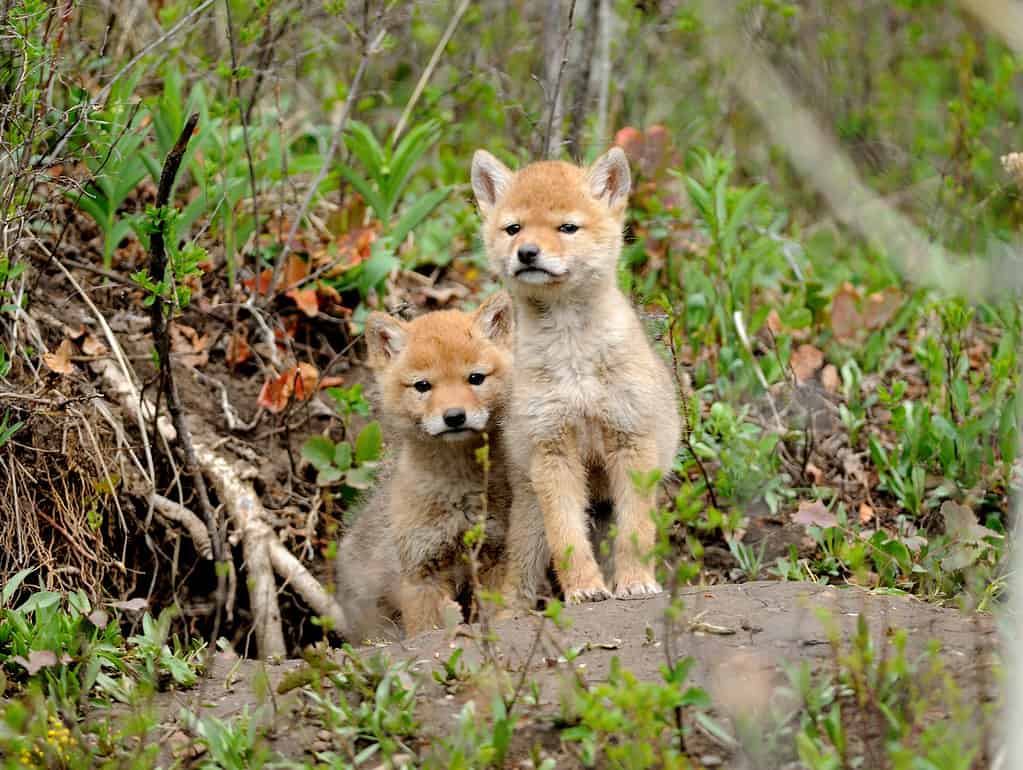
Coyotes use several types of vocalizations and body language to communicate.
©mlharing/iStock via Getty Images
A unique claim to fame for the coyote is that it is the loudest and most talkative of all the wild animals in North America! That is why its scientific name, Canis latrans, actually means “barking dog”. Adult coyotes have at least 11 different ways to communicate through various sounds, with growls, woofs, puffs, barks, yelps, howls, and high-frequency wines. Adults commonly use woofs in particular to warn baby coyotes to go back inside the den.
In addition to their many vocalizations, baby coyotes also communicate with their families using body language. Excited or happy pups, for example, may wag their tails, while pups who are feeling scared or submissive will flatten their ears.
9. Baby Coyotes Don’t Stay in the Den Very Long
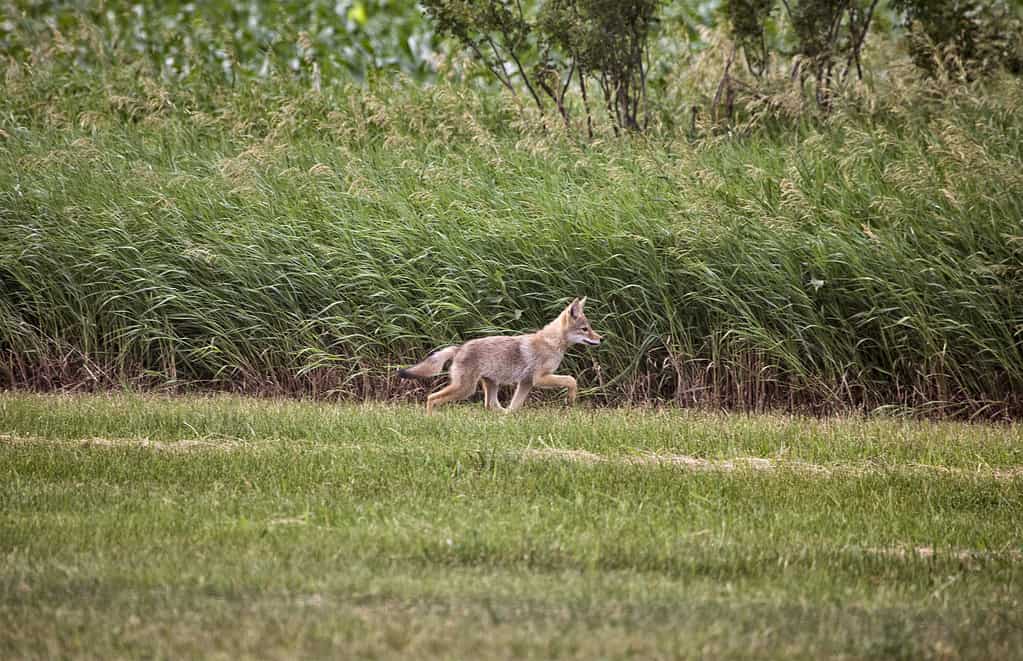
Once they are big enough, baby coyotes begin to explore the world around them.
©bobloblaw/iStock via Getty Images
Coyotes only use dens when they are having pups — during the rest of the year, they sleep out under the stars and open sky. Dens only serve as a safe haven for coyotes to give birth and as cozy little nurseries where the pups are nursed by their mother. However, once these early stages are over, the pups don’t stick around in the dens for too long. They venture out and explore the surrounding areas, although they’ll still keep secret resting spots near the den site. In addition, parents regularly relocate the pups as a protective measure. This helps to keep them safe and evade flea infestations.
10. There Are 19 Subspecies of Baby Coyotes
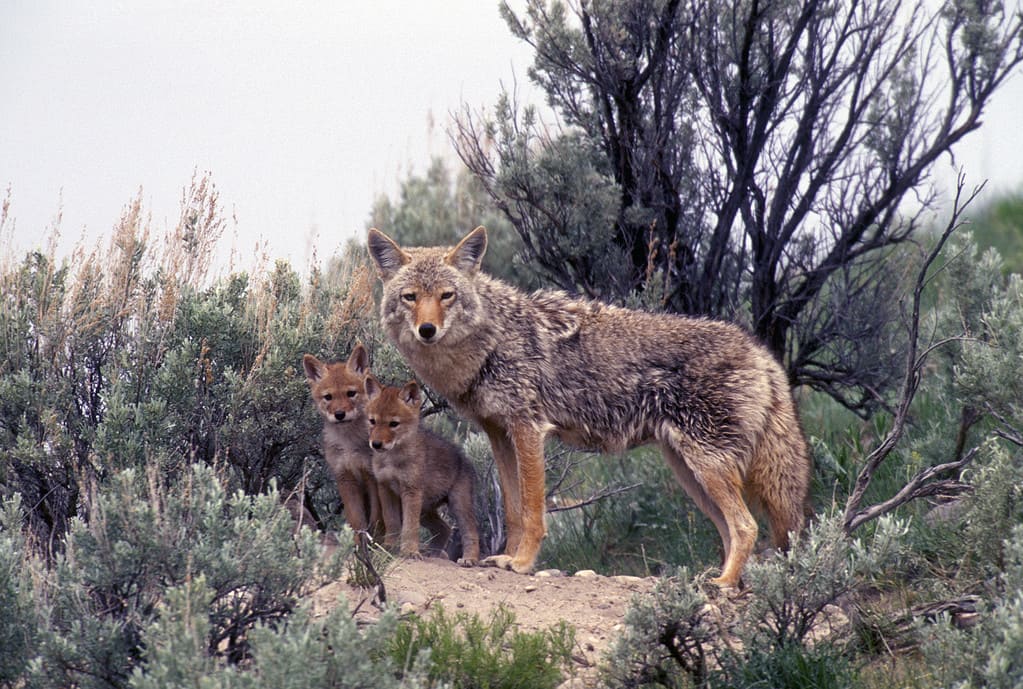
Some of the largest coyotes live in Yellowstone National Park in the northwest United States.
©KenRinger/iStock via Getty Images
Native to North America, the coyote — a smaller relative of the wolf — exudes a distinct allure that sets it apart from other canines. With 19 distinct subspecies, these graceful and resilient creatures grow into exquisite adults, with a harmonious blend of light gray and red or fulvous (tawny or brownish yellow) fur, accentuated by elegant streaks of black and white.
The different subspecies vary in appearance, depending on where they live. For example, coyotes that live in eastern regions, like the northeastern coyote (Canis latrans thamnos) and the southeastern coyote (Canis latrans frustor), are usually darker and larger than those that live in the west and north. Coyotes along the Pacific coast tend to have brighter colors with shades of deep orange or brown, as seen in the California Valley coyote (Canis latrans ochropus) and the Northwest Coast coyote (Canis latrans umpquensis).
In Aridoamerica, subspecies like the Lower Rio Grande coyote (Canis latrans microdon) and Mearns’ coyote (Canis latrans mearnsi) are smaller. Further south to Mexico and Central America, coyotes tend to have dark reddish fur and short muscles, like the Durango coyote (Canis latrans impavidus) and the Mexican coyote (Canis latrans cagottis).
FAQs (Frequently Asked Questions)
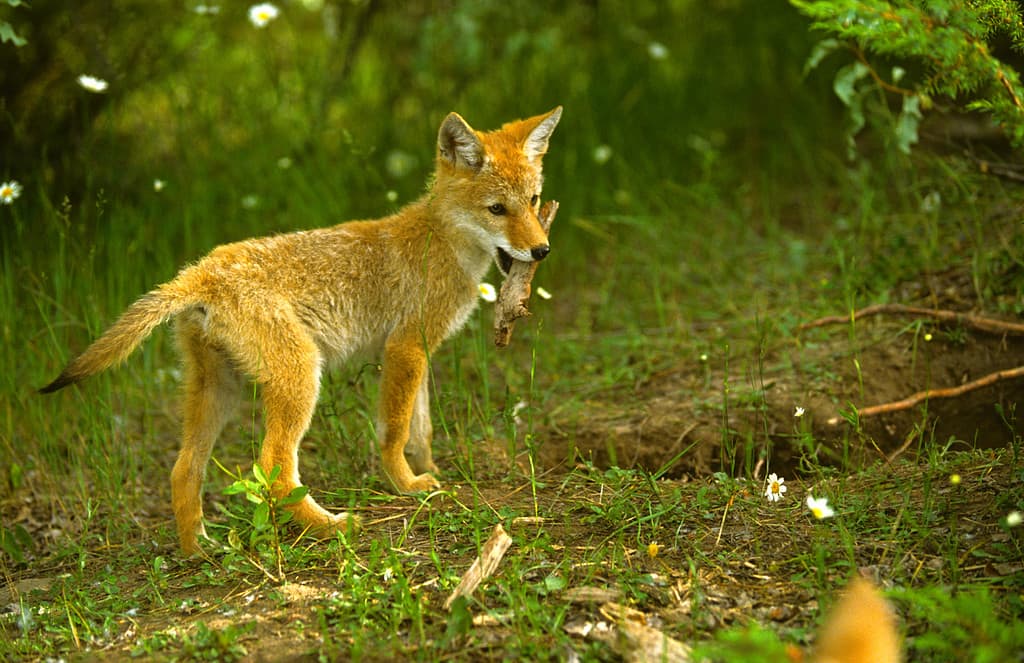
Even though coyote pups are cute, curious, and playful, they are still wild animals and deserve respect.
©Tom Tietz/iStock via Getty Images
Baby coyotes are called pups.
For the first two to three weeks of life, baby coyotes rely solely on their mother’s milk for nourishment. After that, their mother regurgitates partially solid food. Between seven and 12 weeks, they begin eating more solid food like dead rodents and small, incapacitated prey. From 12 to 16 weeks, they begin to hunt with their mother, and after 16 weeks, baby coyotes eat much like adults do.
When they are born, baby coyotes are very small and only weigh 0.44 to 1.10 pounds.
In the beginning, baby coyotes live with their mother in a den, such as a rock crevice, cave, hollow tree, secluded area, or animal burrow. Coyotes are native to North America and live from Alaska all the way down to Central America in forests, deserts, mountains, grasslands, and even urban areas.
A female coyote typically gives birth to four to seven pups at a time. However, they can have anywhere from one to 19 pups at a time!
Baby coyotes are dependent on their parents, just like humans. If you ever come across a baby coyote, quietly leave the area and give the pup some space. Most likely, its mother is nearby hunting. However, if the pup looks sick or injured, if it is crying or whimpering, or if you are concerned about its safety, contact your local wildlife services or a wildlife rehabilitator.
Yes, in most places it is illegal to have a pet coyote. In addition, baby coyotes are wild animals and they don’t stay babies for long.
The photo featured at the top of this post is © jeu/iStock via Getty Images
Thank you for reading! Have some feedback for us? Contact the AZ Animals editorial team.





